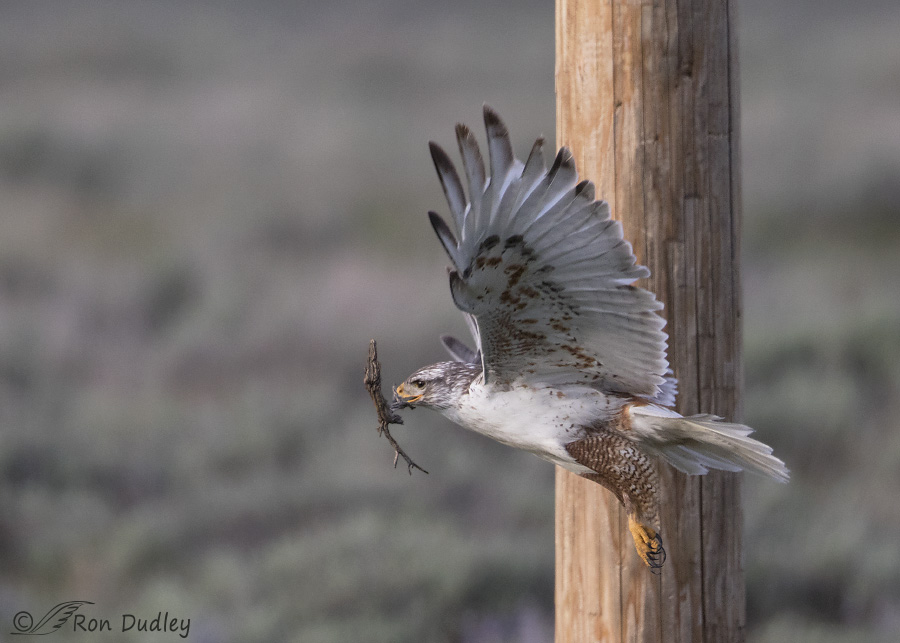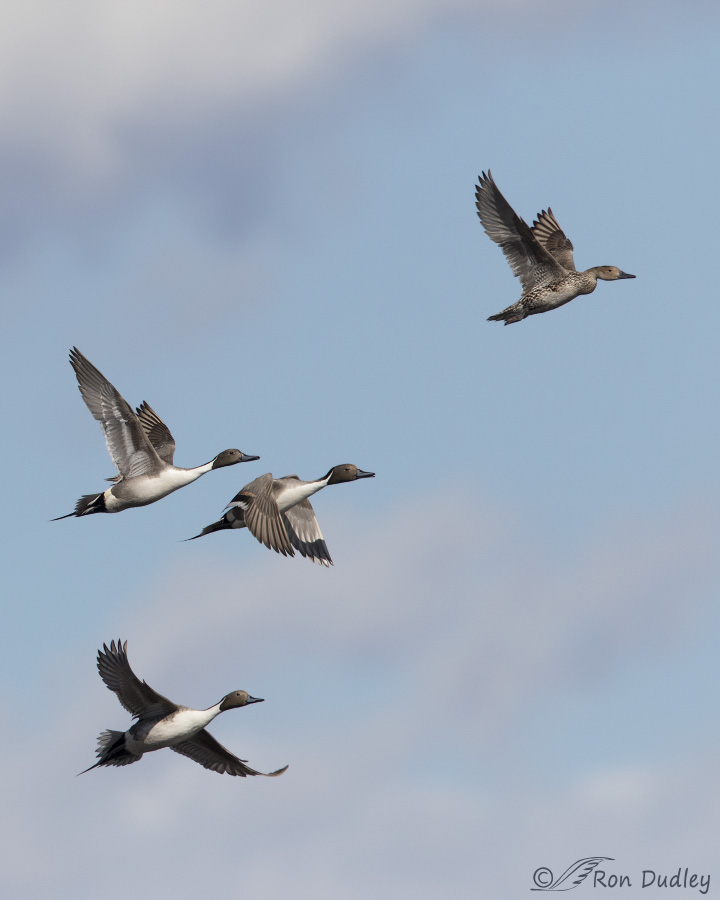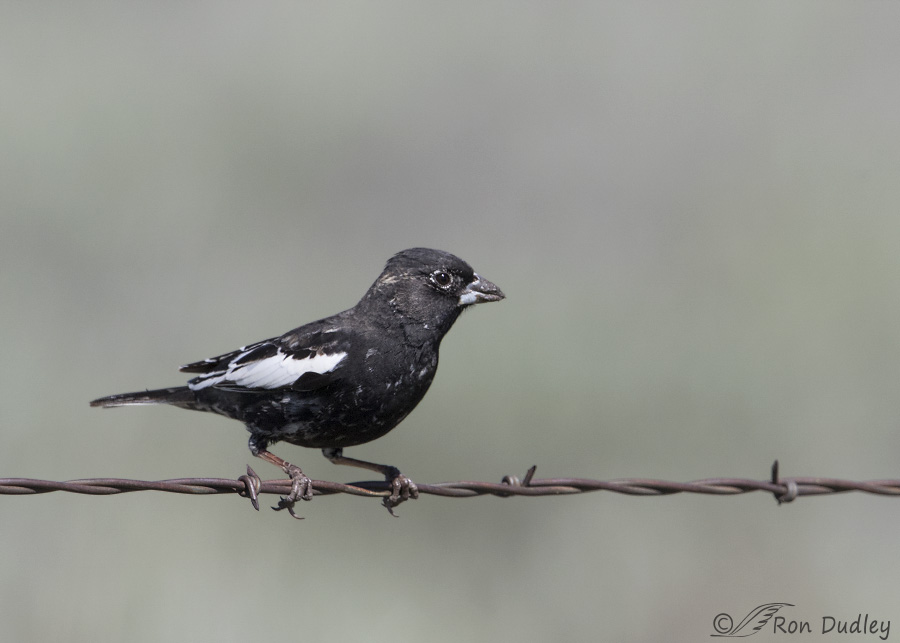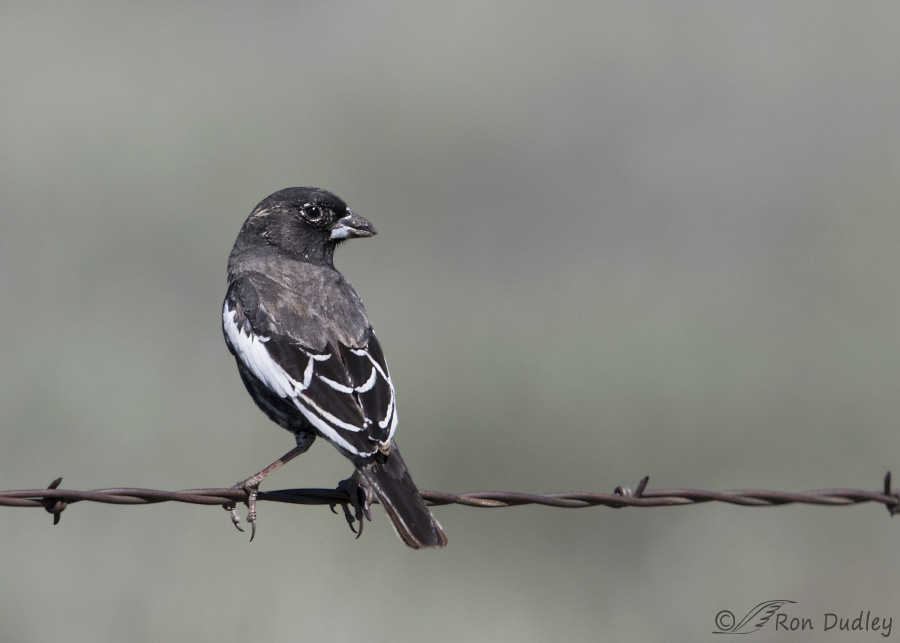Usually my blog focuses on a single species but today’s post is a bit of a potpourri. Each of these images was taken in the Centennial Valley of Montana during my camping trip earlier this month.
 1/2500, f/5.6, ISO 1250, Canon 7D Mark II, Canon EF 500mm f/4L IS II USM + 1.4 tc, not baited, set up or called in
1/2500, f/5.6, ISO 1250, Canon 7D Mark II, Canon EF 500mm f/4L IS II USM + 1.4 tc, not baited, set up or called in
Regular readers know that I generally dislike power poles in my images but I found this unusual perspective on one to be just different enough to pique my interest and the combination of pole and hawk actually helps to illustrate a small mystery.
For years now in the early summer there’s been a pair of obviously mated Ferruginous Hawks hanging around the same power poles in a remote area of the Centennial Valley of Montana. Each year I see the same behavior – both birds fly from the poles to retrieve nesting material in the vicinity and then return to the poles with it. Typically they hold the twigs and small branches in their beaks for a short time and then deliberately drop them to the ground. That behavior is repeated. Often.
They make no attempt to actually construct a nest that I know of. In this area the species typically nests at the tops of medium-sized bushes or small trees (I’ve never seen them nest on a power pole) but the closest trees or bushes are several miles away and I’ve never seen one of these birds carry nesting material in that direction. I just don’t understand it.
This image, taken twelve days ago in the Centennial Valley in low light conditions, shows some of the behavior I’ve described above. This Ferruginous Hawk is flying back to one of the poles after retrieving nesting material. True to form it landed on the pole and then dropped the twig (this time I didn’t actually see it fall but that’s what has always happened before. And since).
I wish I knew what was going on…

1/4000, f/7.1, ISO 400, Canon 7D Mark II, Canon EF 500mm f/4L IS II USM + 1.4 tc, not baited, set up or called in
I enjoy photographing ducks in flight and I should attempt it more often. These Northern Pintails were flying over a bridge near the spot where the Red Rock River flows into Lima Reservoir and I instinctively took a few “poke and hope” shots as they did so. I like the good separation of the birds, the mix of clouds and blue sky in the background, the wing positions of three of them, all four ducks are sharp and I enjoy the fact that the female is in the lead…
 1/3200, f/6.3, ISO 640, Canon 7D Mark II, Canon EF 500mm f/4L IS II USM + 1.4 tc, not baited, set up or called in
1/3200, f/6.3, ISO 640, Canon 7D Mark II, Canon EF 500mm f/4L IS II USM + 1.4 tc, not baited, set up or called in
I’m no birder – only a humble bird photographer. I don’t keep lists nor do I participate in most of the other trappings of classical birding. But I’ll admit that whenever I see and/or photograph a species that is new to me or is out of its normal range I get a real rush – even if I’m unable to photograph it or my images of them are mediocre. Documentary images are “good enough” in such situations.
This is a male Lark Bunting photographed on 6/4/16 in the Centennial Valley. He wasn’t yet in full breeding plumage so he looks a little scruffy but dang I was still absolutely delighted to see him. This species is out of range in Utah so I’ve never seen one there (or anywhere else). They’re also out of their normal breeding range in this part of Montana, though just barely (according to Birds of North America Online).
 1/4000, f/6.3, ISO 640, Canon 7D Mark II, Canon EF 500mm f/4L IS II USM + 1.4 tc, not baited, set up or called in
1/4000, f/6.3, ISO 640, Canon 7D Mark II, Canon EF 500mm f/4L IS II USM + 1.4 tc, not baited, set up or called in
When he briefly turned his back on me I got a strong hint of his spectacular markings to come. When he reaches full breeding plumage he’ll be uniformly deep black with highly contrasting white markings.
One day I’d love to see one of these males in that plumage.
Ron
Addendum: I’d forgotten! I DID photograph a female Lark Bunting in Montana about 5 years ago so this male isn’t really a lifer for me. That mistake is just another example of brain flatulence for me, which seems to happen a little more often as I get older. I apologize for the error.


Marvelous shots Ron! Thanks for sharing!
Charlotte
If your memory really falls apart someday, you can have new “lifers” every single day. Something to look forward to!
Love your pot-pourri.
The hawks are on clean-up patrol. Or just messing with your mind.
Watching birds develop their full adult or mating plumage is such a treat. And yes, they do sometimes look moth-eaten in the process.
Another delightful post. Thank you.
“Just messing with my mind” seems most likely, EC. Birds have a habit of doing just that!
I’ve seen nest platforms in the SW that were put up for ferruginous hawks (most were used by ravens, though, I think) – perhaps someone should put up a platform in that area where there are no nest-sized bushes or trees and see if the FEHA twig-collecting/dropping behavior changes. Though if they truly couldn’t find a place to nest, you’d think they’d move elsewhere, expecially if it’s a bonded pair. Mysterious, indeed!
I’m sure they could find a nest in the valley if they really tried, Louise. There are several of them that have been used by Ferruginous Hawks in previous years that haven’t been used for the past two years. And there are other nesting Ferrugs in the general area.
Sure wish I could read their minds…
Hello Ron !!! As always love your pictures…..someday maybe mine will compare maybe…. The stick behavior I have seen ospreys do same thing. Will have a nest on say powerpole #3( just for reference) but will fly to powerpole #5 with stick and drop it. .I will have my camera aimed at nest in expectancy but he will fly off to powerpole 5 drop stick.
Interesting observation, Marina. I guess I haven’t had enough experience with Ospreys to have observed that behavior in them.
If the one you captured before was a female and this one is a male juvenile), you SHOULD BE EXCITED AS IT’STILL A “FIRST”…with one more “first” to come…that of an adult male…yes, I know what you meant, but jeeeez!
I am still excited and yes the male was a first for me but it still wasn’t a “lifer” as I referred to it in my title. Wanna be accurate, ya know…
I’ve never even heard of a Lark Bunting, much less seen one. Hope we get to see one in full adult plumage…always like the crispness of black and white…Very elegant. The pintails do look like a painting…how clever of them to fly in perfect composition formation for you! (Looks like the lady in front had a good breakfast)….
“Looks like the lady in front had a good breakfast”
I noticed that same thing, Patty – quite a contrast to the males.
Love the picture of the ducks!! My inlaws had a painting hanging over their sofa that reminds me of this picture. I like yours better though.
Ok, where are all the raptor people when you need them. I’m so VERY curious about this behavior with the hawks. Are they cleaning their beaks?? Maybe playing a game (I know…I know…I’m grasping at twigs here), showing off, or just honing their skills.
Carol, yet another part of the mystery is whether or not it’s been the same pair of birds I’ve seen doing this in the same area over the years. If it’s the same pair the behavior may be unique to those particular birds. If it isn’t it may be typical behavior for the species.
Everybody (supposedly) loves a mystery but I prefer them solved!
Now you’ve got my curiosity boiling, too…so why the heck don’t you just ask them!!! Maybe they’re just the Forest Gumps of hawkdom….PLEASE–somebody explain this and MAYBE I’ll buy it!,,,Do they always drop the material?
I did “ask them”, Patty – very nicely too. They had their mouths full at the time (with nesting material) so they just ignored the question. 🙂
Others have said it and I’ll repeat it. Those ducks look like a painting. One you’d see in Sibley’s or on the Audubon web site.
Thanks, Zaphir. I think the background has a huge positive effect on the image. A few clouds, mixed with blue sky, can sure make a difference.
It is amazing that birds don’t follow human boundaries?! VBG!!
Your Pintail shot looks a lot like an old painting I have in my office. You took a very nice shot.
Great images of the Lark Bunting – “the rush” is what a lot of us feel when we see a new bird, whether its for the year, state, or for the life list.
However, I always get a rush when species don’t follow man-made rules!
A couple of years ago during beautiful weather I had excellent views of a Clark’s Grebe here in Vermont! I had a huge “rush” that day and a downer at the same time, because I didn’t have my camera!
“I didn’t have my camera”
I know that feeling, Dick, and it isn’t a pleasant one. That’s why I ALWAYS carry one of my older 7D’s with attached zoom lens in my pickup – no matter where I go or what I’m doing.
Yup, you are correct, I should do that, have missed some good shots!!
Ron…great shots all! I love the Pintails and the Lark Bunting…never even heard of it let alone seen one. Keep up the beautiful photography…you always teach me something new. Jer
That Lark Bunting was really unexpected, Jerry. That’s one of the reasons I love what I do – the occasional serendipitous surprise encounter.
Oh my…and I’m rushed this morning. Later! Just know the normal redundant OH WOW is in place.
As for the hawks’ behavior, I have no idea. I KNOW there’s a reason for it, but until the hawks start talking, this one might remain a mystery.
Gotta go!
“until the hawks start talking, this one might remain a mystery”
I don’t think I can wait that long, Laura. My curiosity is killing me…
Ron, the questions just keep on coming, don’t they? I mostly love that, but still! There IS a reason–I know there is. But the mind boggles (again).
Folks here found a redtail hawk nest in Syracuse with two nests close together (on either side of a cupola), two females, one male and SIX chicks!! Oh the questions there! And the few answers we’ve got just bring up a whole bunch of new ones. We discovered (from nest watchers) that all six eggs were laid in one nest, but the physics of how one redtail covers/incubates six eggs, and then later, how she covers/broods six growing bobblehead youngsters boggles the mind since we know how fast the kiddos grow. I’ve watched the difficulty of BR doing all that with three, but six? YIKES! Then again, I watched the Harrisburg, PA peregrines raise six, all to fledge, so the raptor thing of just get it done whatever you have to do comes to mind. LOL! AND, once they’re able/mobile, the chicks go from nest to nest, walking along a narrow-ish ledge! I know several experts who would tell us that CAN’T/WON’T EVER happen. And yet, there they are.
Ron- that Pintails in flight images is just stunning! I do look forward to your posts and commentary!
Thanks, Dan. I don’t know why I don’t photograph ducks in flight more often. Gotta change my ways…
Interesting behavior for the hawks – strange to appear to be “wasting” energy on the twig gathering/dropping exercise! The power pole does fit right in and give perspective as to the size of the hawk in this case. Duck photo is flat beautiful all around. Don’t think I’ve ever seen a lark bunting – it’s current coat does give a hint of the full beauty to come! 🙂
“strange to appear to be “wasting” energy on the twig gathering/dropping exercise”
That’s exactly one of the reasons I’m confused about this behavior, Judy. I know there’s a logical explanation but I sure don’t know what it is.